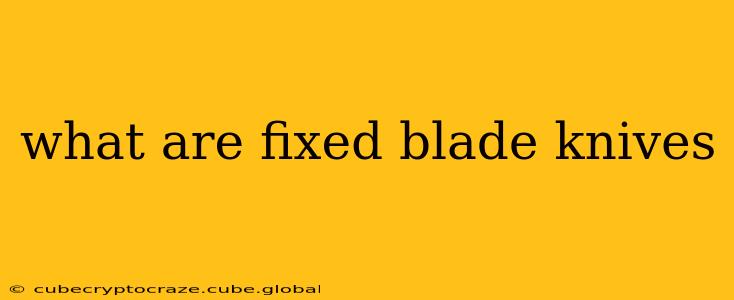Fixed blade knives are a timeless tool, prized for their strength, reliability, and versatility. Unlike folding knives, which have a blade that folds into the handle, fixed blade knives have a blade that is permanently attached to the handle. This simple design has made them indispensable tools for countless tasks throughout history and continues to make them a popular choice for outdoor enthusiasts, professionals, and collectors alike. This guide delves into the world of fixed blade knives, exploring their features, benefits, and various applications.
What are the Different Types of Fixed Blade Knives?
The world of fixed blade knives is incredibly diverse, with variations designed for specific purposes. Some of the most common types include:
-
Hunting Knives: Typically characterized by a long, pointed blade, often with a gut hook or a curved belly for field dressing game. These knives prioritize strength and durability for demanding tasks.
-
Survival Knives: Built for resilience and functionality in emergency situations. These knives often feature full tang construction (the blade extends the entire length of the handle), robust blades, and sometimes integrated features like fire starters or saws.
-
Tactical Knives: Designed for military or law enforcement use, these knives are often characterized by strong, durable blades, often with aggressive serrations or a tanto point (a strong, piercing point).
-
Camp Knives: Versatile knives suitable for a range of camping tasks, from food preparation to wood carving. They tend to be a good balance between size, weight, and utility.
-
Skinning Knives: Specialized knives with thin, flexible blades designed for removing hides from animals with minimal damage to the pelt.
-
Throwing Knives: Specifically balanced and weighted for accuracy when thrown. These knives require specialized techniques and safety precautions.
What Makes a Fixed Blade Knife Different from a Folding Knife?
The key difference lies in the blade's construction. A fixed blade knife has an immovable blade, offering superior strength and durability compared to a folding knife. Folding knives, while convenient for carrying, can be more prone to breakage under heavy use or stress. Here's a comparison table summarizing the key differences:
| Feature | Fixed Blade Knife | Folding Knife |
|---|---|---|
| Blade Attachment | Permanently attached to the handle | Blade folds into the handle |
| Strength | Superior | Generally less strong |
| Durability | Higher | Generally less durable |
| Weight | Typically heavier | Typically lighter |
| Convenience | Less convenient for carrying | More convenient for carrying |
| Maintenance | Requires less frequent maintenance | Requires more frequent maintenance |
What are the Benefits of Using a Fixed Blade Knife?
Several compelling advantages make fixed blade knives a popular choice:
-
Superior Strength: The fixed blade design results in significantly greater strength and durability, making them ideal for heavy-duty tasks.
-
Reliability: The lack of moving parts reduces the likelihood of malfunction or failure during critical situations.
-
Precision: The rigid blade allows for more precise cuts and better control, crucial for tasks requiring accuracy.
-
Versatility: Different fixed blade designs cater to various uses, from hunting and survival to everyday tasks.
What are Some Common Materials Used in Fixed Blade Knives?
The materials used in the construction of fixed blade knives significantly impact their performance and lifespan. Common materials include:
-
Blade Steel: Various types of steel are used, each with different properties regarding hardness, edge retention, and corrosion resistance. Common examples include stainless steel, high-carbon steel, and tool steel.
-
Handle Materials: Handles can be made from various materials, including wood, bone, plastic, rubber, and micarta (a composite material). The choice of handle material affects grip, comfort, and durability.
How Do I Choose the Right Fixed Blade Knife?
Selecting the right fixed blade knife depends heavily on your intended use. Consider the following factors:
-
Blade Length and Shape: Consider the type of tasks you'll perform. Longer blades are suitable for tasks requiring more reach, while shorter blades are more maneuverable.
-
Blade Steel: Choose a steel type appropriate for your needs, considering factors like hardness, edge retention, and corrosion resistance.
-
Handle Material: Select a handle material that offers a comfortable and secure grip, even when wet or cold.
-
Overall Weight and Balance: Find a knife that feels balanced and comfortable in your hand.
Choosing the right fixed blade knife is a personal journey, and understanding its purpose and the material composition ensures a tool that perfectly meets your needs. Careful consideration of these factors will help you find the perfect fixed blade knife for your specific requirements, whether it's for hunting, survival, or everyday carry.
